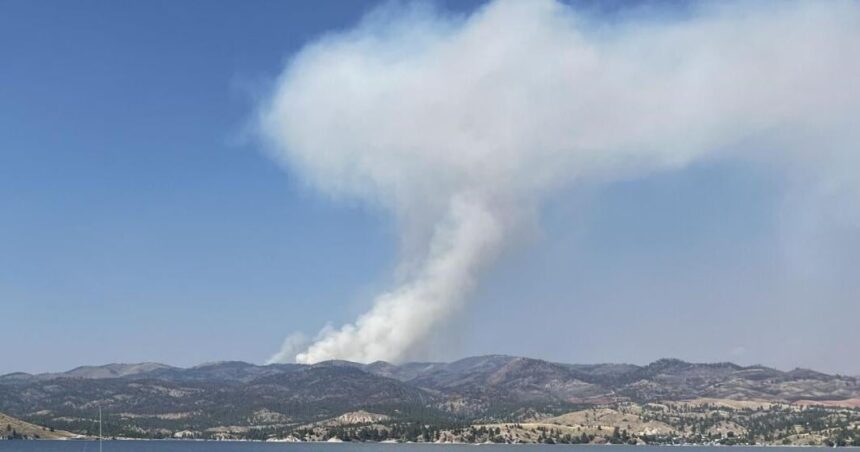According to Michael Downey, Drought Program coordinator for the Department of Natural Resources and Conservation, drought conditions in Montana will likely continue into early winter.
Downey, along with several other officials, addressed the Governor’s Drought and Water Supply Advisory Committee in Helena on Thursday, Aug. 15. Reports indicate varied conditions across the Treasure State, with an overall trend of dryness, though it has been worse in the past.
West-central Montana is experiencing some of the worst conditions, with wildland fires and extremely low flows on the Blackfoot and Clark Fork rivers. The Blackfoot River, for example, has the lowest flows in 24 years, leading to fishing closures and irrigation water loss.
People are also reading…
Stephen Begley, water rights and instream flow specialist for FWP, stated, “In fact, the Blackfoot River probably was one of the earliest years where we’ve had to make a call.”
Despite exercising its water rights, the streamflow in the Blackfoot did not increase, according to Begley.
“Unfortunately, we didn’t see any type of bump at all,” he said. “The Blackfoot has just been going down, down, down.”
July was the 10th warmest on record, with temperatures 5 to 6 degrees above normal, contributing to the low flows in the region due to abnormally dry winter and spring conditions, as noted by Downey.
Low flows in the Blackfoot River are endangering native bull trout, while the Big Hole River is also experiencing stress on arctic grayling, rainbow, and brown trout due to low flows.
Recent rainstorms, shorter days, and cooler nights have led to the lifting of some fishing restrictions by Fish, Wildlife & Parks, though closures remain on portions of the Big Hole, Madison, and the entire Jefferson River.
Stream flows across the state have been below median since June, with little relief in sight as September is typically dry, according to Aaron Fiaschetti, U.S. Geological Survey hydrologist for Wyoming and Montana.
This summer’s stream flows are similar to 2016, which was one of the top 20 worst flow years, according to Fiaschetti, despite the drought.
Cory Calnan, deputy chief of fire protection for the Department of Natural Resources and Conservation, mentioned that Montana has fared relatively well compared to neighboring states in terms of wildfires this season, thanks to rainfall at the end of July and quick initial attacks.
However, continued warm weather and winds may dry out fuels and contribute to the spread of prairie fires, particularly in southeastern Montana where the Tongue River complex of fires has burned about 60,000 acres.
This summer has seen widespread damage from high winds in Montana, with storms causing damage from Missoula to Billings and Miles City, with wind speeds reaching up to 90 mph, as noted by Jake Ganieany of the Department of Military Affairs’ Emergency Services.





